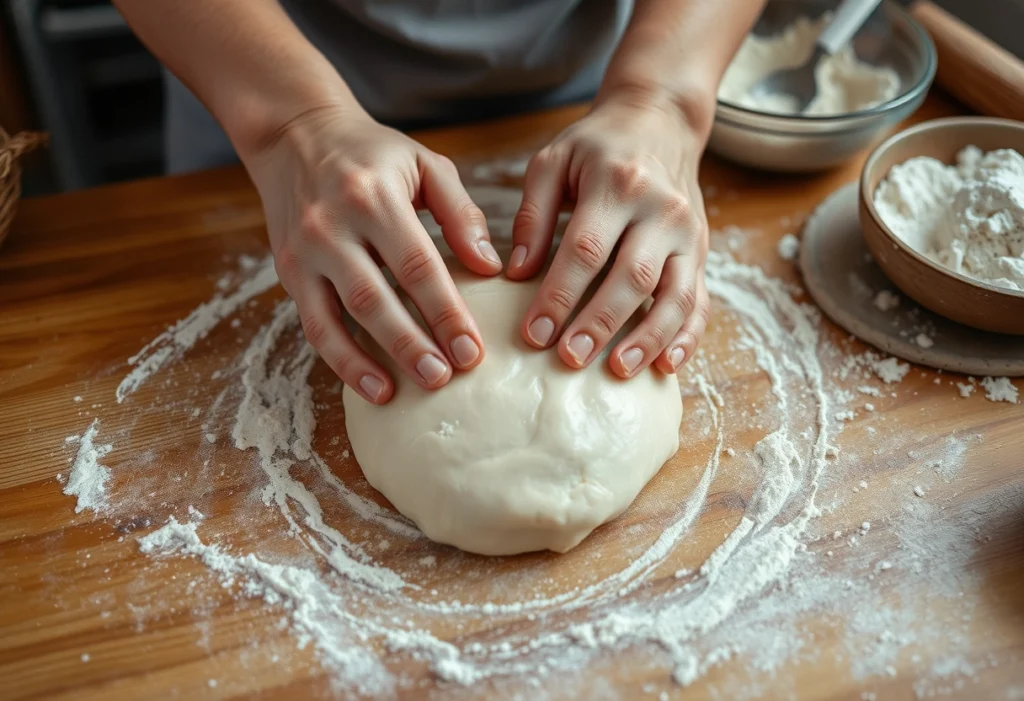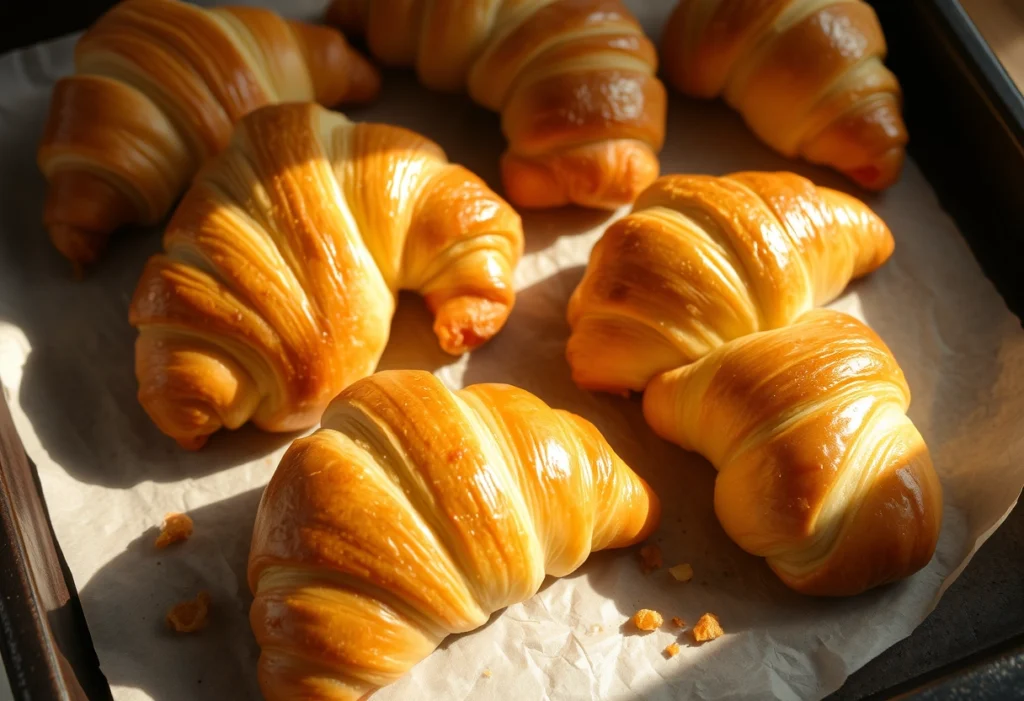Craving Swiss pastries? Try this easy Gipfeli recipe! Step-by-step instructions to create golden, buttery delights. Start baking your Gipfeli today!
Gipfeli, the Swiss cousin of the French croissant, is a beloved breakfast pastry known for its golden, flaky exterior and soft, buttery interior. Whether you’re yearning for an authentic Swiss breakfast experience or simply love the aroma of freshly baked goods wafting through your kitchen, mastering the art of Gipfeli-making is a rewarding culinary adventure. This guide will walk you through creating these delectable treats from scratch, even if you’re new to baking. Get ready to impress your family and friends with your newfound Swiss baking skills!
Ingredients
For 8-10 Gipfeli:
- 250g all-purpose flour
- 25g sugar
- 1 tsp salt
- 10g fresh yeast or 1 packet active dry yeast
- 125ml warm milk
- 50g unsalted butter, room temperature
- 1 egg for egg wash
- Extra butter for laminating
Step 1: Prepare the Dough

- In a large bowl, whisk together the flour, sugar, and salt.
- In a separate small bowl, dissolve the yeast in the warm milk. Let it sit for about 5 minutes until frothy.
- Make a well in the center of the dry ingredients and pour in the yeast mixture. Using a wooden spoon or your hands, gradually incorporate the flour into the liquid, mixing until a shaggy dough forms.
- Add the room temperature butter and knead the dough for about 5 minutes. The dough should become smooth, soft, and slightly elastic.
- Cover the bowl with a damp cloth and let the dough rise in a warm spot for an hour, or until it doubles in size.
Step 2: Roll and Laminate the Dough
- Once risen, turn the dough out onto a lightly floured surface. Roll it into a rectangle about 1/4 inch thick.
- Spread a thin, even layer of softened butter over two-thirds of the dough. Fold the unbuttered third over the center, then fold the opposite end on top, like folding a letter.
- Roll the dough out again into a rectangle and repeat the folding process one more time. This creates those signature buttery layers.
- Wrap the dough in plastic and chill in the fridge for 30 minutes. This firms up the butter, making the dough easier to shape.
Step 3: Shape the Gipfeli

- Roll the chilled dough into a large circle about 1/4 inch thick.
- Using a sharp knife or pizza cutter, slice the dough into 8-10 triangular wedges, as if cutting a pizza.
- Starting from the wide end of each triangle, gently roll towards the point, slightly stretching the dough as you go. This creates the classic crescent shape.
- Arrange the shaped Gipfeli on a parchment-lined baking sheet, making sure to tuck the pointy end underneath to prevent unraveling.
- Cover the shaped pastries with a clean kitchen towel and let them proof in a warm spot for about 30 minutes. They should puff up slightly.
Step 4: Bake the Gipfeli

- Preheat your oven to 375°F (190°C).
- Lightly beat an egg and brush this egg wash over each Gipfeli. This will give them a beautiful golden sheen.
- Bake for 12-15 minutes, or until the Gipfeli are a deep golden brown. Keep an eye on them – they can go from perfectly done to overdone quickly!
- Remove from the oven and let cool on the baking sheet for a few minutes before transferring to a wire rack.
Tips for Perfect Gipfeli
- Cold butter is key for laminating. It helps create those flaky layers we all love.
- Don’t overwork the dough when kneading. You want it smooth but not tough.
- Proper proofing is crucial. Underproofed Gipfeli will be dense, while overproofed ones may collapse during baking.
Conclusion
Congratulations! You’ve just embarked on a delicious journey into Swiss baking. With this recipe in your repertoire, you’re well-equipped to bring a taste of Switzerland to your breakfast table. Remember, perfecting Gipfeli takes practice, so don’t be discouraged if your first batch isn’t picture-perfect. The most important ingredient is the joy of baking – and of course, enjoying the warm, flaky results of your labor.
Have you tried making Gipfeli? We’d love to hear about your experience or any tips you’ve discovered along the way. Share your stories in the comments below, and happy baking!
Frequently Asked Questions
1. What is the difference between Gipfeli and a French croissant?
Answer: Gipfeli, a Swiss pastry, is similar to a croissant but lighter and less buttery. While both have a flaky texture, Gipfeli’s dough is slightly less layered than the traditional French croissant, offering a more delicate bite.
2. How long does it take to make Gipfeli from scratch?
Answer: Making Gipfeli from scratch takes approximately 2-3 hours, including time for dough rising and proofing. However, the active preparation time is around 1-1.5 hours, making it a manageable recipe for beginners.
3. Can I make Gipfeli without yeast?
Answer: Traditional Gipfeli requires yeast for its light, airy texture. Substituting yeast with baking powder is not recommended, as it will not give the same flaky, layered result.
4. How can I get the perfect flaky texture for Gipfeli?
Answer: For the best flakiness, ensure the butter is cold when laminating the dough and avoid overworking the dough. Chilling the dough between folds helps maintain its texture.
5. What’s the best way to store leftover Gipfeli?
Answer: Store leftover Gipfeli in an airtight container at room temperature for up to 2 days. For longer storage, freeze them for up to 1 month and reheat in the oven for a crispy texture.
6. Can I use pre-made puff pastry dough to make Gipfeli?
Answer: Yes, you can use pre-made puff pastry dough as a shortcut, but homemade dough will yield a more authentic taste and texture. For the best results, make your dough from scratch.
7. What can I substitute for milk in the Gipfeli recipe?
Answer: If you prefer a dairy-free version of Gipfeli, you can substitute the milk with almond milk, soy milk, or oat milk. The texture may vary slightly but the results will still be delicious.
8. Why is it important to laminate the dough for Gipfeli?
Answer: Laminating the dough creates the signature flaky, buttery layers in Gipfeli. The process of folding and rolling the dough with butter helps develop these layers, resulting in a light and airy pastry.
9. How do I know when the Gipfeli are fully baked?
Answer: Gipfeli are done when they have a golden brown color and a crisp, flaky texture. You can check by tapping the bottom—if it sounds hollow, the pastry is baked through.
10. Can I make Gipfeli in advance for a special occasion?
Answer: Yes, you can prepare the dough ahead of time, refrigerate it overnight, and bake the Gipfeli fresh in the morning. This saves time while still providing a freshly baked treat for your event.
